Mecum sells a piece of history – a hot rodded Mangusta with Shelby Mk V badges keeps ‘Gooses over $300K.
by Wallace Wyss –
The Mangusta’s time in the sun is at last a reality–they have soared to over $300,000 which is up to Iso Grifo territory (an Italian car produced in very close numbers to the Mangusta, the Mangusta numbering 401 examples). But that sales price is but one fourth of what the Giugiaro-designed Bizzarrini Strada makes at auction these days.
The thing to celebrate is that these are both American-engined cars, yes using iron block pushrod engines, engines that were scorned by the Ferraristi for their common origins–are now fetching heavy bread. Being able to stop at junkyards all across America and buy engine parts finally makes sense when you consider rebuilding a Ferrari V12 is going to cost $50,000 for starters.
First a little background is in order on Ford’s thinking at the time. Mecum made much of the fact that Shelby and De Tomaso, both former race drivers, and both car builders, were working together. In fact Mecum was trying to sell another De Tomaso prototype at the very same auction, the De Tomaso 70P, which shares with the Mangusta a spine chassis. That race car was definitely a Shelby-DeTomaso jointly-funded project. The Mangusta not so much. Ford was only momentarily considering the Mangusta because Ford’s bid to make a streetable Ford GT40, the Mk. III, failed miserably with only seven sold. But they still wanted a mid-engined road car. Hence the moniker SHELBY Mk. V.
In the literature that accompanied this 1969 car, Mecum showed that, in period, there was a brochure I remember seeing at the time that said Shelby was going to import the Mangusta. And there’s no denying that the car in the black and white pictures in the brochure is pictured at the Ford Design Center wearing SHELBY nameplates. But it was all a pipe dream, hype before the deal was inked. The reality is Ford had done the brochure and planned its US show debut before they inspected De Tomaso’s factory. I know from people who were there on the ground that Ford engineers and designers were shocked at how much hand work it took to make a Mangusta.
Ford you understand, was a company that was used to using assembly lines from back in the Model T days. You want more cars, you turn up the line speed, capitsch? But when it looked like it was going to take a lot of hand work to finish a Mangusta, that blew the meaning of line speed out the window.
Ford demurred, and Shelby went on with his own projects. By that time he was no longer sympatico with DeTomaso anyway. Ford passed on the ‘Goose, but Kjell Qvale (pronounced Shell Que-volley) an importer based in San Francisco, saw one drive by while he was in Italy and promptly got to a phone booth and put in an order for over 200.
This auction car doesn’t have the same livery as the actual Mangusta Ford had at the design center. It looks pimped up for Woodward avenue with racing stripes, added scoops on the rockers, and a tail spoiler probably from a Pontiac GTO.
Plus it has a Boss 302 under its tin engine lids, not the Shelby Mustang 289, so we wonder if there was in the paperwork a copy of a work order telling Ford or Shelby to install that in period. The brochure they gave with the car said the stock car Shelby would import would have a 250 hp, 302 V8, a wimpy engine that was a far cry from a Boss 302.
They do mention Giugiaro, and surprisingly mention the design was first thought of as an Iso design, (as a companion for the front engined Fidia. which they don’t mention) but ironically back then Renzo Rivolta, owner of Iso, didn’t want to build a mid-engined road car.
If you think of this car as still pretty much a stock Mangusta, when it sold at $319,000, all the hoopla accomplished by tying it in with Der Snakemeister resulted in fetching only a little better than par for the course in ‘Gooses.
Mecum was reportedly unable to sell the DeTomaso 70P race car at the same Florida auction but that car, by comparison, had a more questionable history. The tackily painted Goose, represented more of a documentable entity.
Let us know what you think in the Comments.
THE AUTHOR: Wallace Wyss is the author of two books on De Tomaso. Today he is a fine artist making portraits of the classics. You can talk to him about commissions at malibucarart@gmail.com
Photos compliments of Mecum Auctions.
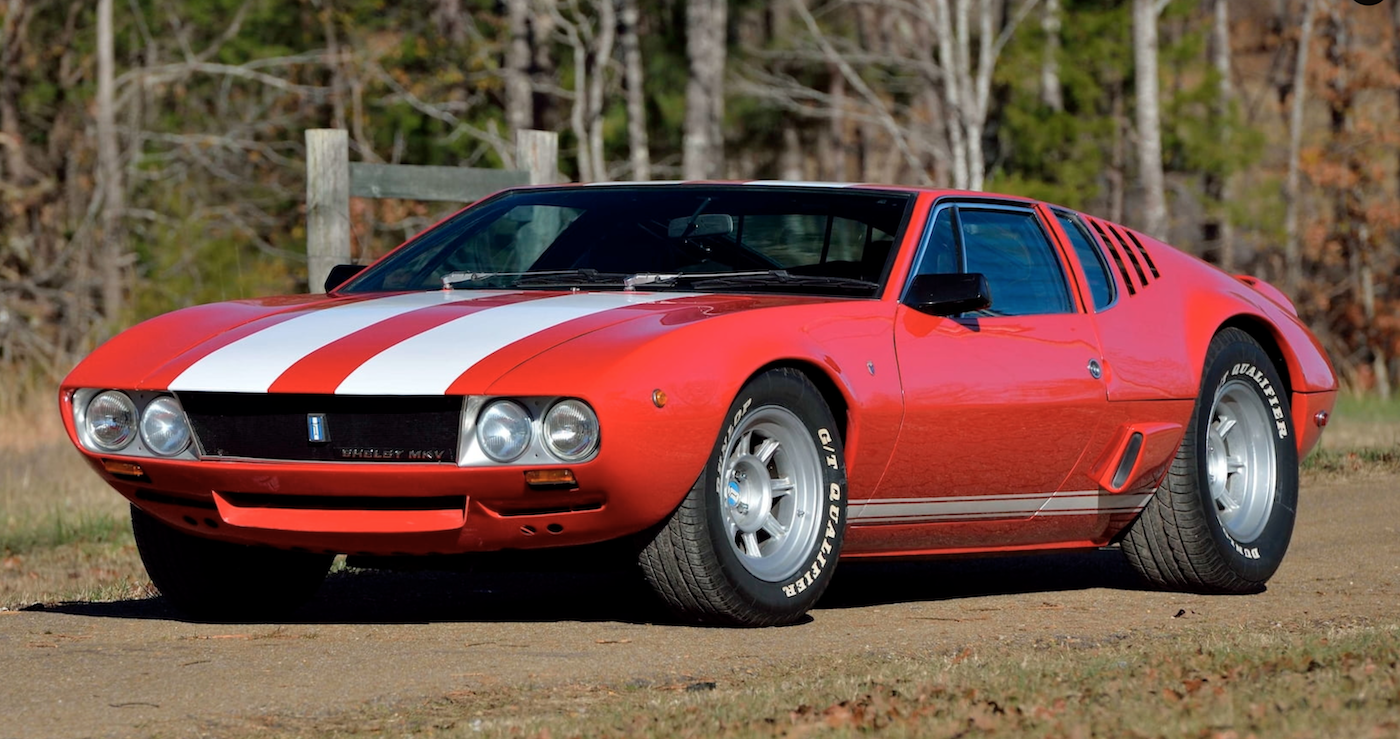
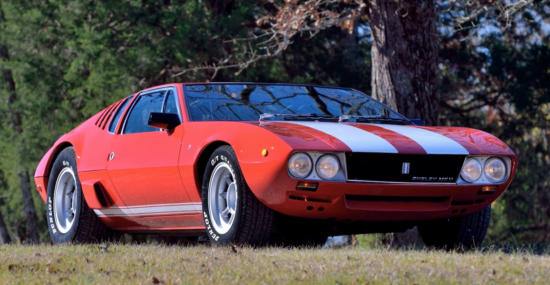
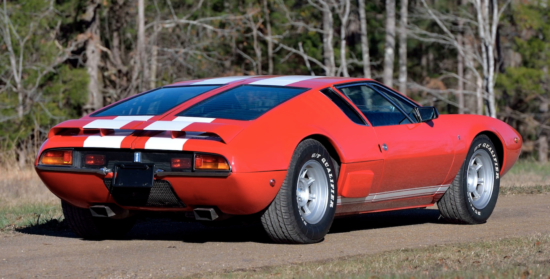
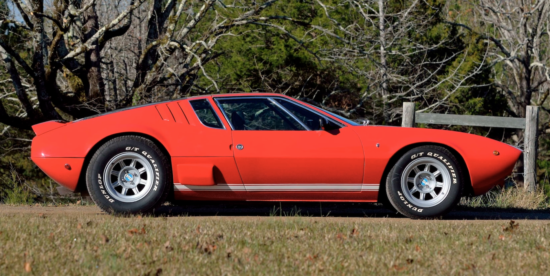
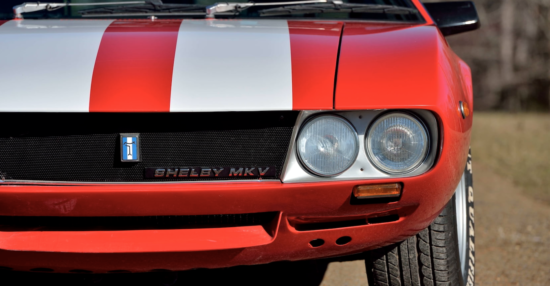
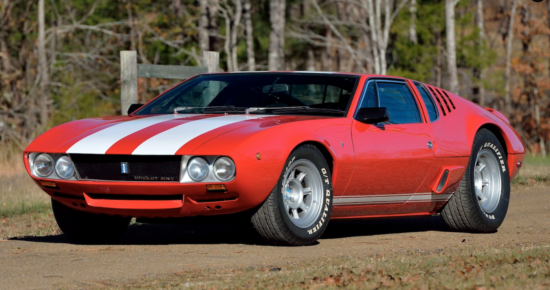
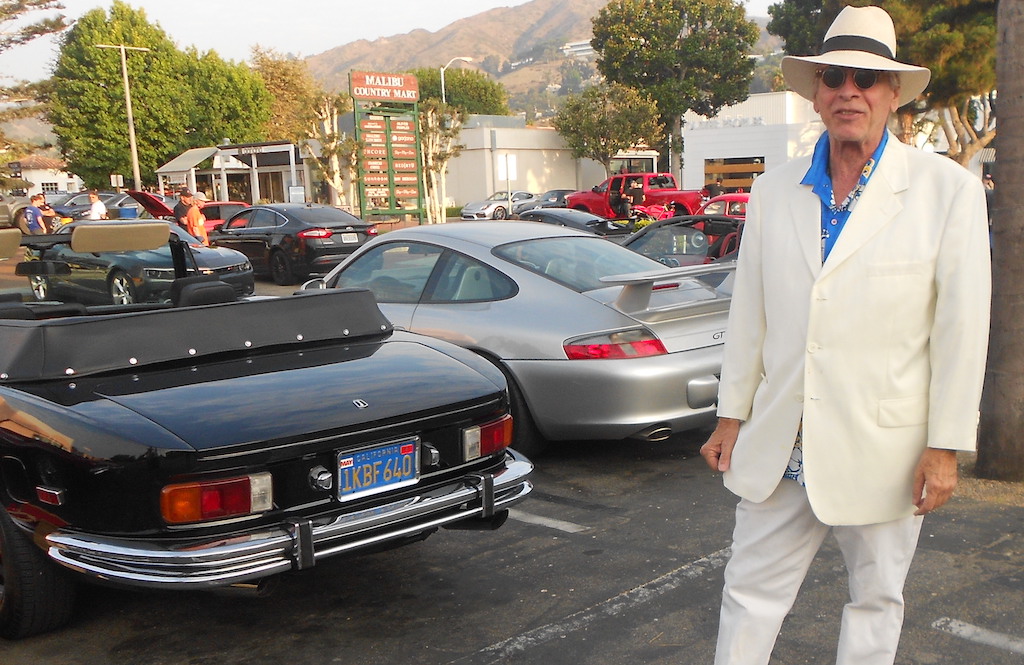
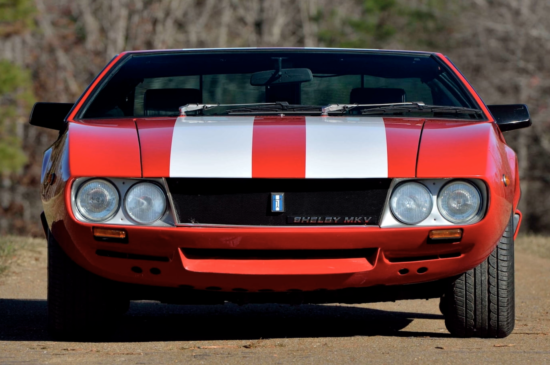



As an owner of an unique Mangusta, I have been far and wide to gather all possible information of my car. I did ask and answers with Tom Tjaarda, Robert Cumberford, Toly Arutunoff, Peter Brock, Piero Rivolta, deTomaso’s son and his wife’s nephew, Jack Telnack, the retired Detroit FORD workers of Eugene Bordinat and many others and the more dug the less I found. But what I did find were some truths to so many wife’s tales.
In regards to the above article and age old story, I asked Piero Rivolta about the involvement of ISO, Giugiaro, his father and Bizzarrini in regards to the Mangusta.
So all I know, for who really cares, is that fake “incorrect” news has been around forever.
****************
Thank you Piero,
I know I could count on you to provide facts about this question. So many people create so much confusion about most of what they encounter.
I fell asleep last night after again reading your ISO article that Robert Cumberford wrote in 2012. Very good.
Take care Piero,
Jeff
Jeff Cobb
Cell 225-907-4514
225-343-7525
On Jan 19, 2016, at 10:04 AM, Piero Rivolta wrote:
Hello Jeff,
The story about Ghia, Alesandro Detomaso, Giuggiaro, Bizzarini, my father and the Iso-Rivolta Fidia and Mangusta is a total fiction. Nothing makes sense. My father had no business with Alesandro, who became my friend in 1967 when I met him at Ghia, where Giuggiaro and myself did the Iso-Rivolta S4, whose body production had to be built by Ghia.
My father died in August of 1966 and never thought about building a 4-door, and perhaps he was right. Bizzarini had nothing to do with this car. Later, because Ghia was doing a lousy job in building the bodies, I took over the production at Iso-Rivolta and changed the name of the S4 to Fidia. Iso built some Snowmobile Ghia to be distributed by their American parent company.
Alessandro and I remained friends until he died. We sailed together many times with my wife Lele and his wife Isabelle, who came to visit me in Sarasota two years ago. But there never was a direct relationship between the two companies Detomaso and Rivolta. Mangusta was a Detomaso car and I don’t know anything about Mangusta production except some confidential information that Alessandro shared with me regarding the American market and other details that will remain confidential. In the Winston Goodfellow book there is a very clear explanation of all this, starting on page 274.
I hope that helps, Jeff. Maybe you could pass the info along to ***********to set him straight?
And unfortunately I won’t be attending Amelia this year. But I hope you enjoy the show! Take care.
Piero
From: Jeff Cobb [mailto:jeffcobb1@me.com]
Sent: Sunday, January 17, 2016 12:31 PM
To: Piero Lele Barberi Rivolta
Cc: Jeff Cobb
Subject: ISO info
Hello Piero,
I wish you well and your Facebook inputs tells me you are.
I just read an article from ********** and I am not sure if he is correct.
Is he?
Would you be able to tell be how the Mangusta body really found itself attached to DeTomaso’s and Peter Brock’s designed framework?
Jeff
I think we tracked that story down and came to the same results, however we did find the source. If I recall it was a old article that Mr Wyss himself wrote !
Here in 2010 the story lives on https://velocetoday.com/detomaso-mangusta-a/
And here in 2018 Winston Goodfellow dives into the story and finds the story written in 1981 by Mr. Wyss
https://www.winstongoodfellow.com/blogs/blog/the-mangusta-originally-a-de-tomaso-or-an-iso
This tale was repeated elsewhere over the years, and a more in-depth version ended up in 1981’s enjoyable “De Tomaso Automobiles.” When discussing the Mangusta’s birth author Wally Wyss writes that Iso turned to Ghia for the design of the S4/Fidia (seen below), and that “Bizzarrini and Giugiaro then agreed that a ‘modern’ two-seater GT would be a good companion for the Fidia. The problem was that Iso didn’t have a suitable mid-engine chassis but Bizzarrini did…(Iso company president Piero) Rivolta…wasn’t interested…in pursuing the development of a mid-engine car.”
He then notes that De Tomaso, then president of Ghia in addition to his own firm, “had his own ideas of what a mid-engine chassis should be like, and decided to adapt Giugiaro’s sleek sports car body to the backbone frame already developed…”